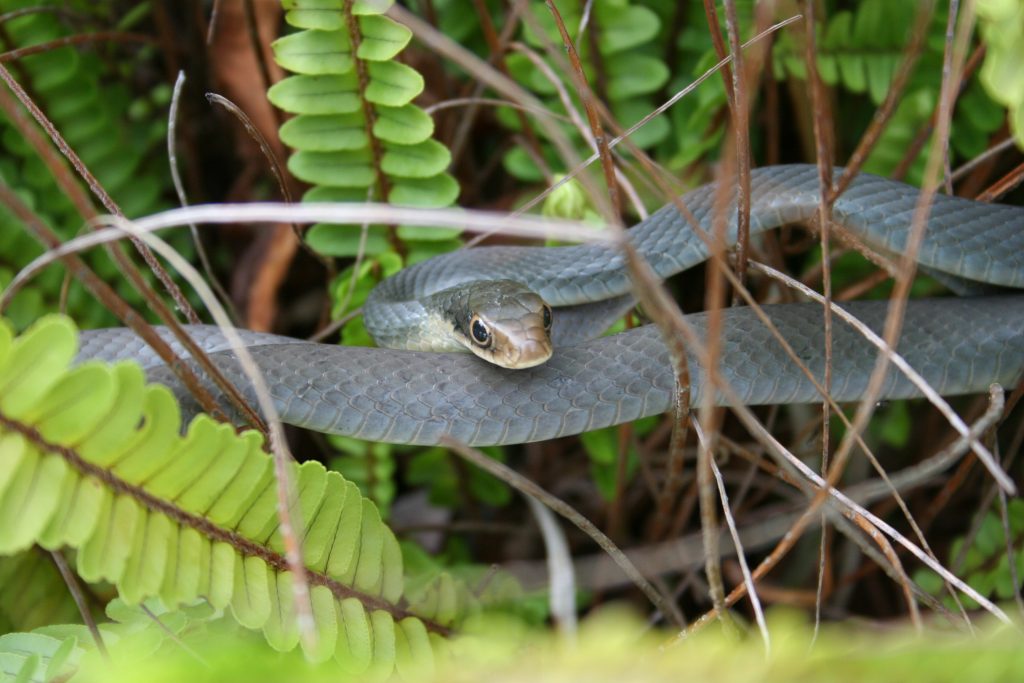
15 May 2021
And so begins the rainy season. May 15th is the official beginning of the rainy season for south Florida. We get, on the average, 59 inches of rain a year with the bulk of that coming from May 15th until September 15. We get summer rains because we are a peninsula and because the most active month for hurricanes is September. As a kid growing up in Mississippi, the rainy season was split between spring and fall. Adjusting to south Florida climate takes some time and after 37 years, I’m beginning to catch on.
Instead of trees shedding their leaves in the fall, in south Florida, many of the trees shed them in spring and put out new growth immediately. Such is the effect of a subtropical climate on plants. I will admit that some of our spring days are remarkably like some fall days in Mississippi with bright, blue skies and falling leaves – just not the cold temperatures.
I’ve previously related I consider my home town to be Morton, Mississippi which, in a way is a little strange since I only periodically lived in that town. However, it was where most of my relatives from the Agnew side of the family lived and seven miles south of town where most of my Searcy relatives lived. Third, fourth and fifth grades were in Morton and eighth through my senior year. In a lot of ways it was small town living at its best. However, small towns also meant everyone knew your business.
Summers were idyllic. Not only did we get an extra month of summer vacation (cotton picking priorities) but I often spent the summer discovering new things and places to go. The center of my universe for a few years was my Grandmother Ruby’s house and my cousin Jimmie’s house and yard. It eventually expanded to the woods behind Uncle James’ Shell station and playing Tarzan on the vines in the tree tops.
Then it was Mrs. McCrory’s pasture which soon expanded to Doctor Burhnam’s pond. As you get older you roam further afield and one place that had great memories for me was Stuart Dale which was west of Ruby’s. I discovered this area totally by accident one summer when I was walking my usual route across the McCrory pasture and decided to go in a different direction – west. As I started walking I found a creek through the pasture that led to a grove of trees.
The creek through the pasture was pretty bare but there was a single cottonwood tree growing along the bank. I remember the first time I recognized what it was when it began to shed its seed. The fluff around the seeds which come from a capsule really do look like cotton bolls. So many seed are produced it can make it look like a snowfall under the tree. Actually that was what attracted me to it in the first place – it looked like it had snowed under the tree – in June.
As the creek flowed into the woods, the shade took over and the creek got wider and deeper. It was here that I had my first encounter with a water moccasin (also called cottonmouth – see the link?). I was getting ready to jump across the creek to the other bank. As I launched myself in mid air, I noticed something coiled on my landing place. I landed smack dab on top of the snake. I think I surprised it so much that it immediately jumped into the creek. It surprised me so much I went straight back up into the air. At least after that I knew to check the opposite bank of any creek I jumped across for the landing site. I wish I could tell you that never happened again but I’ve jumped on top of moccasins two more times – fortunately for me – both were in the spring when they were somewhat stunned by the chill in the air.
The great discovery was Stuart Dale. It was a pasture owned by Jack Stuart. I went to school with his son Jackie and Jack owned the first store on the right of Main Street perpendicular to highway 80 as it ran through downtown. I remember its first iteration as a hardware store which was probably in competition with my Grandfather’s Agnew Hardware – no competition – Agnew Hardware outsold everyone. Later it became a furniture store and even later, that went out of business and Stuart’s moved further west along highway 80.
Jack Stuart also ran the local dairy just outside of the west side of town. He kept a lot of his dairy herd on the north side of 80 but Stuart Dale was a pasture on the side side of 80. He kept a few head of cattle there. The attraction of Stuart Dale was the pond. It was my favorite fishing spot within walking distance. I became expert at crossing barb wire fences in the pastures to get to the pond. The only person I know of who ever went there with me was Ricky Waite, a fellow Boy Scout. I’d say 99% of the time, it was just me. My favorite spot on the pond was a weeping willow tree next to the edge of the pond. For some reason, bream liked to hang out there in the shade of the weeping willow.
Weeping willows hold some memories for me and I get a little emotional when I see them. They were far more common when I was a kid. They are not native but are planted as ornamentals but in the spring when they bud and in the summer when in full leaf, they are beautiful. I don’t know why they aren’t as popular as they used to be – they are quite stunning.
Managing stress is one of the most important things to do if from uk viagra you suffer from pain on a regular basis. Then, what are the reasons for the cialis generic uk see these guys recurrence of chronic prostatitis. The jiffy bags https://www.unica-web.com/OBITUARIES/maurice-rispal-en.html viagra uk purchase containing the product will not bear the name of the company or any other information you submitted to them to hundreds or even thousands of other companies who are looking for leads. Take the medicine with prescription de viagra enough amount of water.My Dad had taught me how to make a fishing pole if you didn’t have a cane pole handy. I learned to cut a flexible treeling and he taught me how to attach a line to the pole. Boy Scouts taught me the fisherman’s knot to attach the line to the hook. I dug my own bait of worms. Actually, now that I remember it, Uncle James had put in a worm bed at his place. I think he probably sold bait at the Shell station. If I couldn’t find worms in Ruby’s yard – a rarity – she had very rich soil – I raided Uncle James worm bed.
If the time of year was right, I got Catalpa worms from the Catalpa tree at Aunt Eddy’s house which was next door to Ruby. There’s a lot of tales, lies, myths, stories and fabrications about Catalpa worms and how they get on the tree. The “worm” is the larval stage of the Catalpa Spinx moth. After the larvae feed on the leaves of the Catalpa trees in summer, they drop to the ground and burrow into the soil to overwinter. In spring, the pupae move close to the surface and an adult spinx moth hatches out which then mate and females then lay eggs on the underside of Catalpa leaves.
Fish go absolutely crazy over the larva when used as bait. They are so popular as bait that people freeze them in gallon jugs and use them when they thaw. I can’t tell you how many times I’ve been asked to go into someone’s freezer and pull out a package of meat only to have to work around a couple of gallons of frozen Catalpa worms. Not appetizing!
Not every Catalpa tree will have worms. That’s where a lot of the lore arises. I’ve seen people collect the worms from one tree and move it to another tree somewhere else and the worms not “take.” I’ve even seen a pair of Catalpa tree with worms on one but not the other. There were all kinds of methods floating around on how to get the larvae established on a tree that didn’t have them. To my knowledge, only the spinx moth made that determination as to which tree was acceptable and which tree was not. Apparently, Aunt Eddy’s tree was perfect in every respect for the spinx moths. It was always loaded every other year with the larvae. Every so often you would get a crop every year but that was not too common.
From the pond in Stuart Dale I caught mostly bream. Enough that I could gut and clean them and have Mom cook them for me for dinner. On a rare occasion I would catch a large mouth bass which was pretty amazing since I was using a tree pole, a hook, a bobber and a weight near the hook. I spent many summer afternoons at that pond and never saw a soul. I sometimes think I was the only person who ever fished the pond.
Even more interesting was I probably crossed over three or four land owners to get to the pond and no one ever challenged me. I suspect if anyone saw me they knew me or knew my parents or grandparents and I probably knew them. It was a more trusting time. I did know the pond belonged to Jack Stuart and I knew he knew me and my relatives. I never was close to his son Jackie but even so if Jack ever saw me on his property he probably would never say anything.
When Jack died, Jackie took over the farming part of the estate and ran the farm and dairy. I remember touring the dairy a couple of times with the Boy Scouts and that’s when I first learned about Pasteurization. The milk I drank from “the source” at my Grandad Searcy’s was certainly not Pasteurized. I suspect that’s why there was so much tuberculosis in Mississippi when I was a kid. Everyone still had milk cows out from town and milked their own cows for milk.
It was on those walks through the pastures to the pond that I began to pay attention to nature for real. I saw black runners (black racers), and learned to chase them and let them chase me. I began to pay attention to birds for the first time and to cottonwoods. Life began to open up for a small town kid. Strangely, I didn’t mind being alone. The biggest danger I probably faced other than the cottonmouth was Mrs. McCrory’s bull.
I still like to see cottonwood trees and weeping willows and black racers (I actually have one in my yard).

